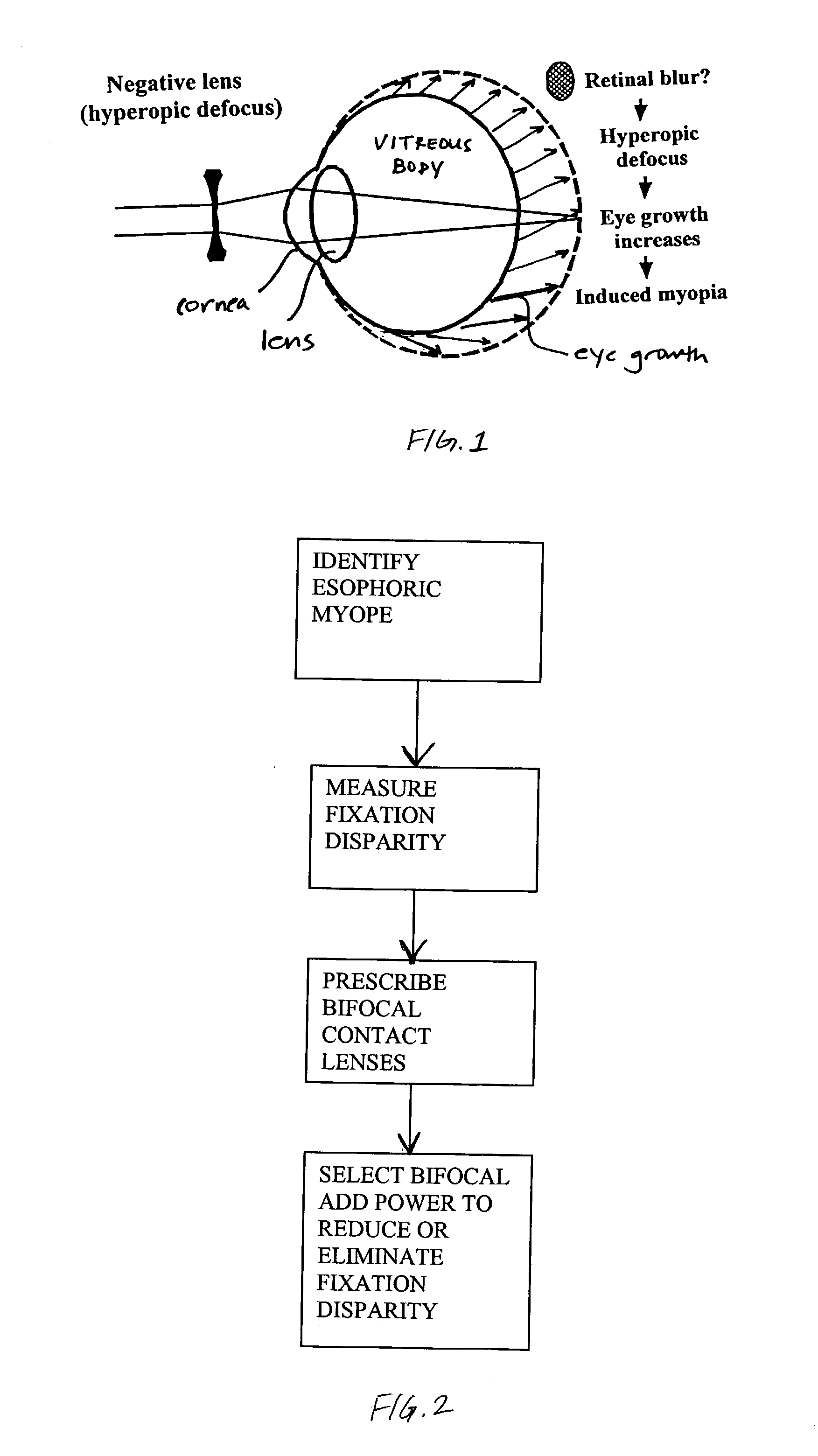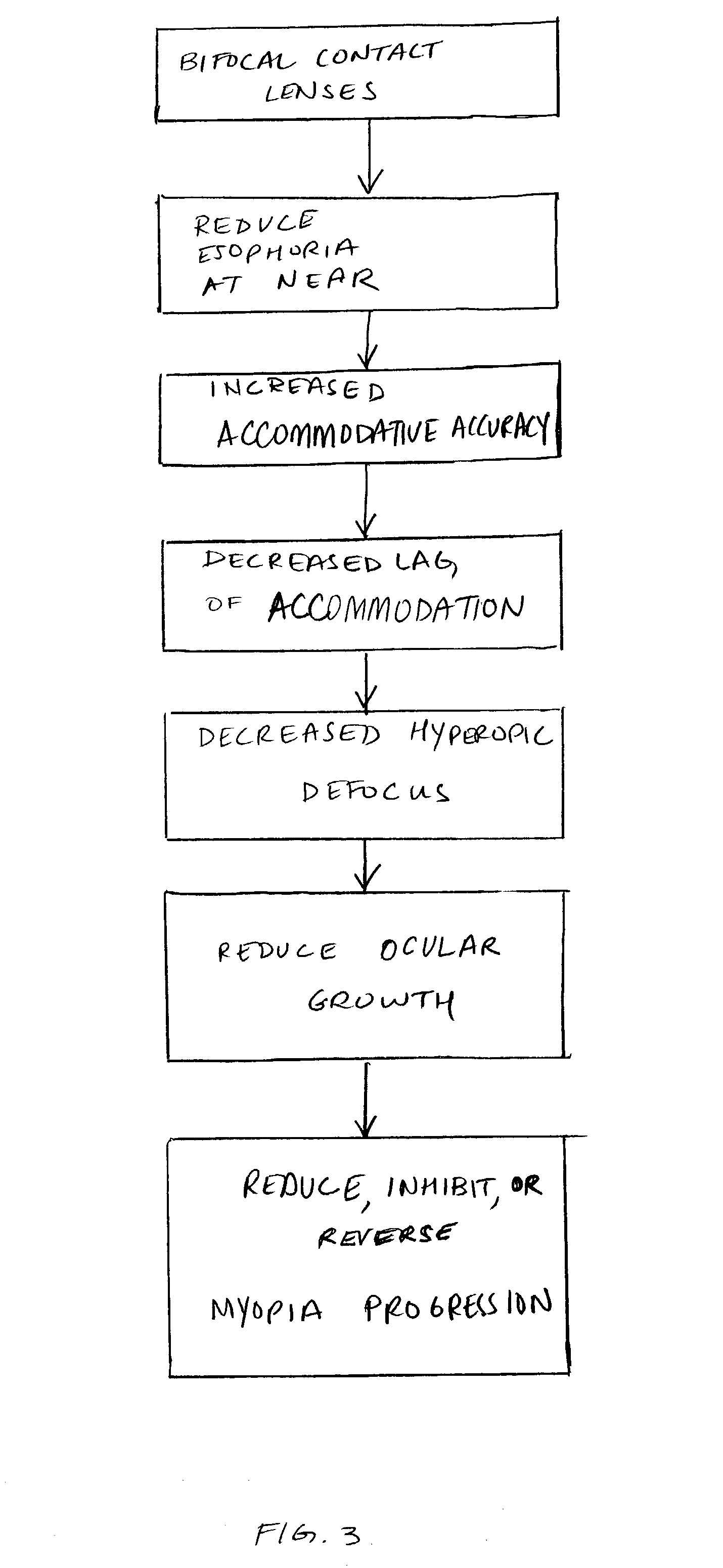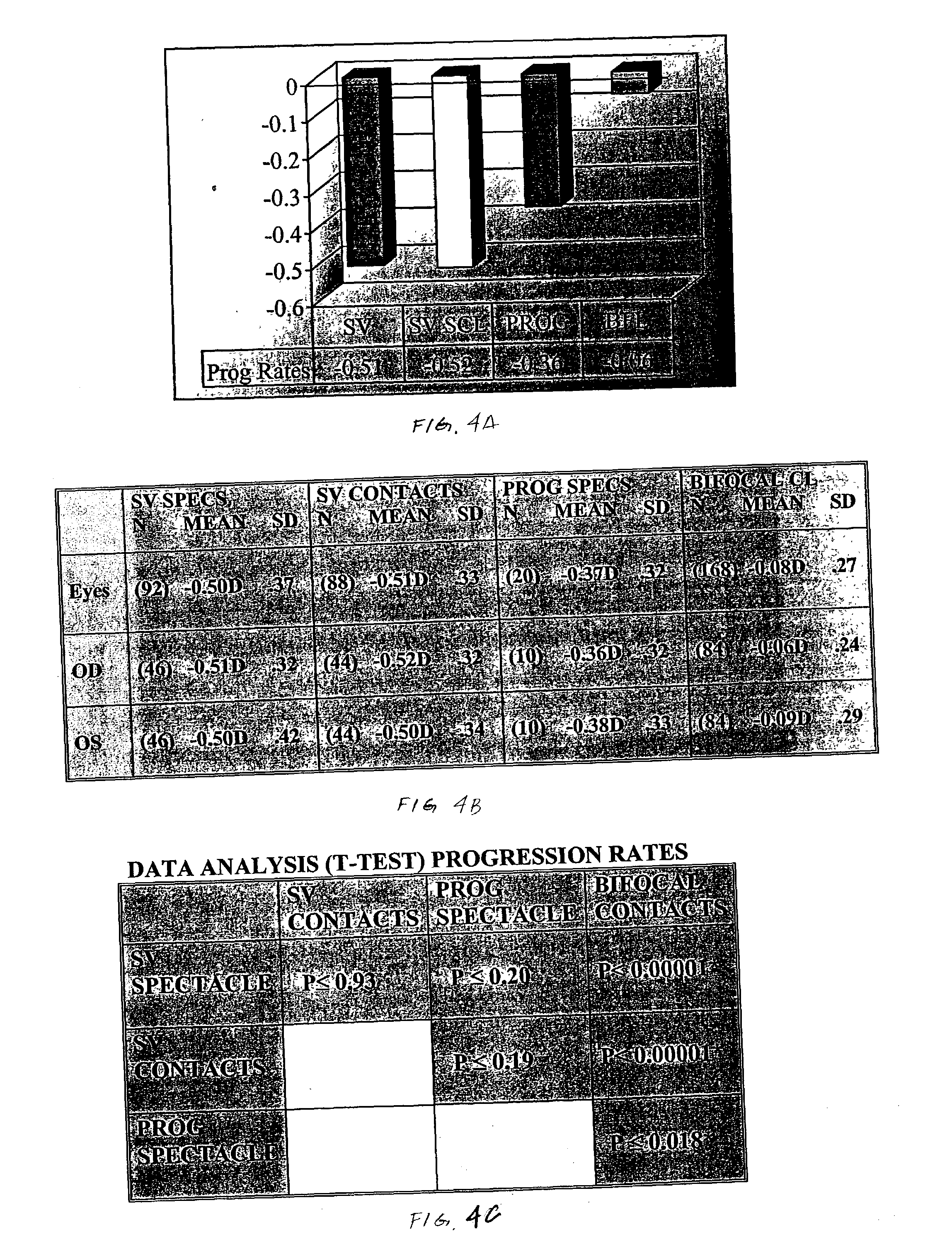Myopia progression control using bifocal contact lenses
a technology of bifocal contact lenses and myopia, applied in the field of myopia progression control, can solve the problems of increased risk of binocular instability and/or amblyopia, eso fixation disparity or eso associated phoria, and difficult gauge of myopia progression ra
- Summary
- Abstract
- Description
- Claims
- Application Information
AI Technical Summary
Benefits of technology
Problems solved by technology
Method used
Image
Examples
Embodiment Construction
[0043] PURPOSE: This study was conducted to test the effectiveness of bifocal soft contact lenses in controlling myopic progression in pre-presbyopic esophoric subjects of all ages.
[0044] METHOD: This retrospective study followed 84 myopic patients, ages 9 to 40 years old, who exhibited progressive myopia and esophoria or esophoria at near. Four intervention strategies were used in a private practice setting. Rates of myopia progression were compared for single vision spectacle lenses, progressive multifocal spectacle lenses, single vision soft contact lenses, and bifocal soft contact lenses.
[0045] PATIENT SELECTION: Patients were included in this study if they met the following criteria: (1) at least -0.5 D myopia (2) astigmatism less than -1.50 D (3) near esophoria or associated esophoria at near through manifest subjective refraction through phoropter or by trial frame (4) old enough to handle contacts (>9 years) (5) pre-presbyopic (<40 years) to avoid concurrent or recent use of...
PUM
 Login to View More
Login to View More Abstract
Description
Claims
Application Information
 Login to View More
Login to View More - R&D
- Intellectual Property
- Life Sciences
- Materials
- Tech Scout
- Unparalleled Data Quality
- Higher Quality Content
- 60% Fewer Hallucinations
Browse by: Latest US Patents, China's latest patents, Technical Efficacy Thesaurus, Application Domain, Technology Topic, Popular Technical Reports.
© 2025 PatSnap. All rights reserved.Legal|Privacy policy|Modern Slavery Act Transparency Statement|Sitemap|About US| Contact US: help@patsnap.com



